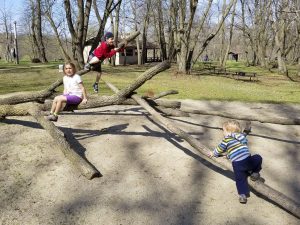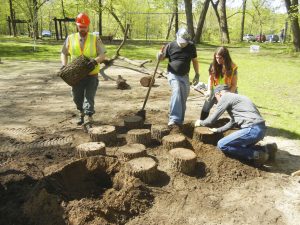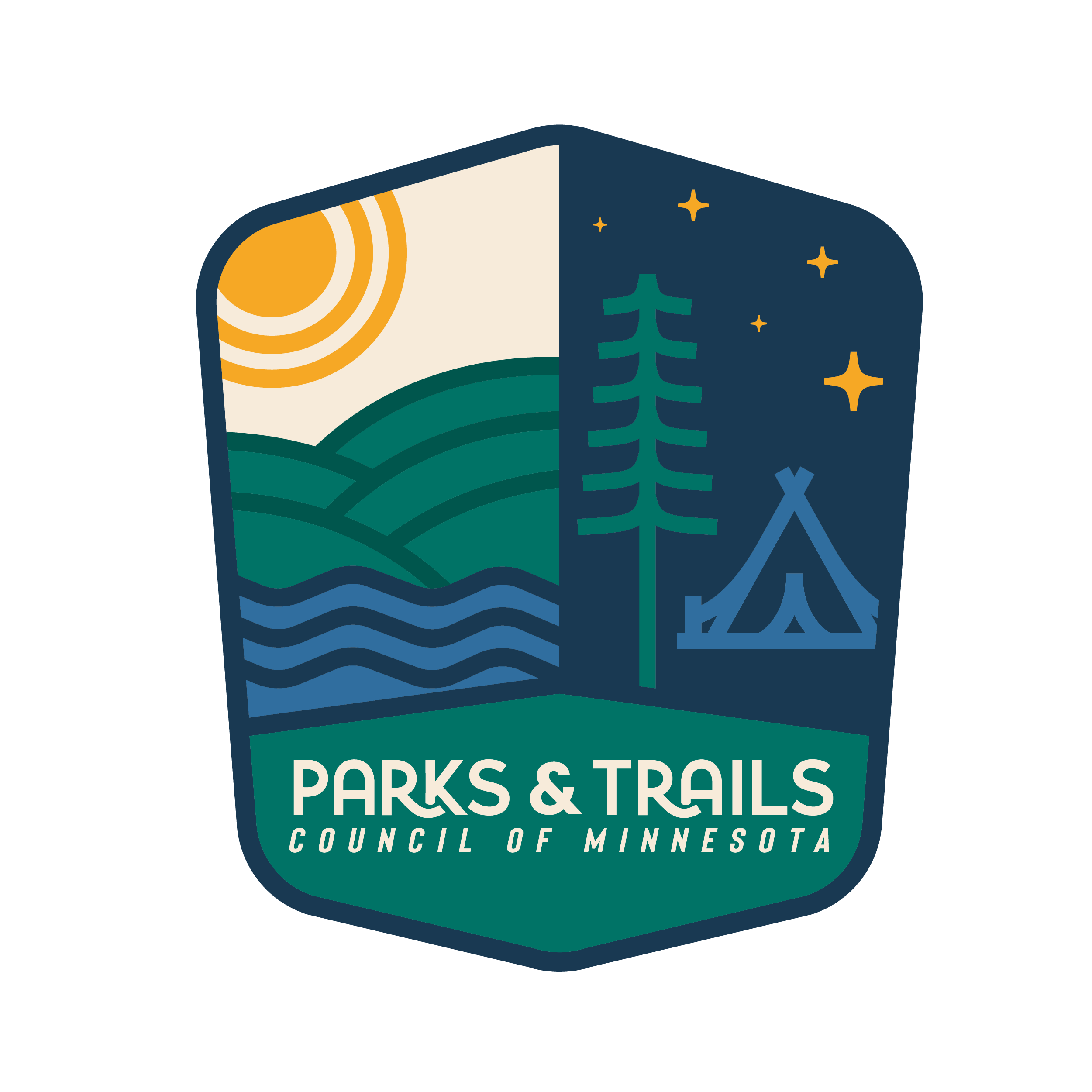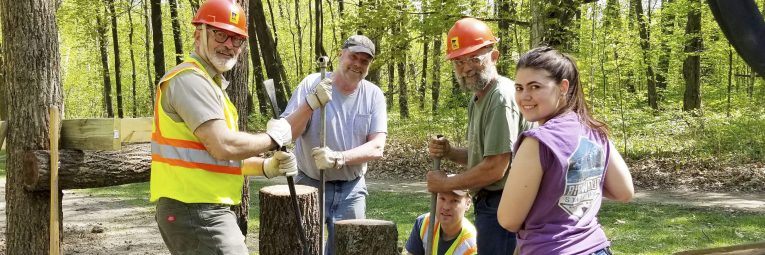Nature play is both a really old and really new concept, depending on how you think about it. Before plastic toys and playgrounds, nature was the original medium for children’s (and grown-up!) play.
Research

Some children took advantage of the volunteers’ lunch break to test out the new playground features.
As we all know, the growing consumption of screen-time among youth has kids staying inside more and spending less time exercising outdoors. That’s why nature play areas have grown in popularity so much in recent years, they are areas designed to reacquaint disconnected kids with how to play outdoors or further deepen existing bonds between nature and children in a safe environment. The safe environment is a benefit for sensitive parents, some of whom are more concerned with safety and risk-taking than previous generations.
What are the research-based benefits of nature play?
- More challenging and numerous options for safe play: Nature play supports development of gross motor skills, fine motor skills, social cooperation, creativity, and environmental stewardship.
- Increased flexibility and imagination: Because play features are multifunctional, kids can reimagine endless possibilities for play.
- Longer periods of physical activity: Children are more physically active and play for longer in nature because they are less likely to get bored!
- More cost effective and easier to maintain: From a development standpoint, average playground equipment today costs between $100,000 to $400,000+ and needs to be replaced every 15-20 years, and recycling options are limited. Nature play areas can constantly change to suit children’s curiosity and can incorporate existing materials from park management activities in many cases.
For more on this, visit: mndnr.gov/nature-play
Vision
Due to the overwhelming evidence for the benefits of nature play and nature playgrounds, DNR Parks & Trails Division is moving away from new development of traditional playgrounds and towards nature play as a strategic vision.
We know many visitors have enjoyed using the few traditional playgrounds that our system offers, but as we look ahead and plan for the future of our parks and recreation areas, we see nature play areas as important gateways for children and families to re-learn how to play and engage with nature.
Guidance
We already have several nature play areas in state parks and recreation areas and a couple more under development. There are a variety of important considerations when designing and constructing nature play areas, such as: location, materials used, ADA accessibility, safety and liability, variety of features, shade, and maintenance.

Installing a feature on a natural playground.
Existing
- Lake Bemidji State Park
- La Salle Lake State Recreation Area
- Nerstrand Big Woods State Park
Future
- Tettegouche State Park
- Frontenac State Park
- Fort Snelling State Park
- Zippel Bay State Park
- Upper Sioux Agency State Park
- Blue Mounds State Park
If your group is interested in fundraising for or helping plan and develop a nature play area, please let me know (Arielle.courtney@state.mn.us) so I can connect you with the right DNR Development Section contact. You can also reach out to Ashley Pethan from Parks & Trails Council for additional tips and support.
Thanks and be well,
Arielle
Partnership Development Consultant
Minnesota DNR, Parks & Trails Division

